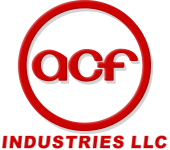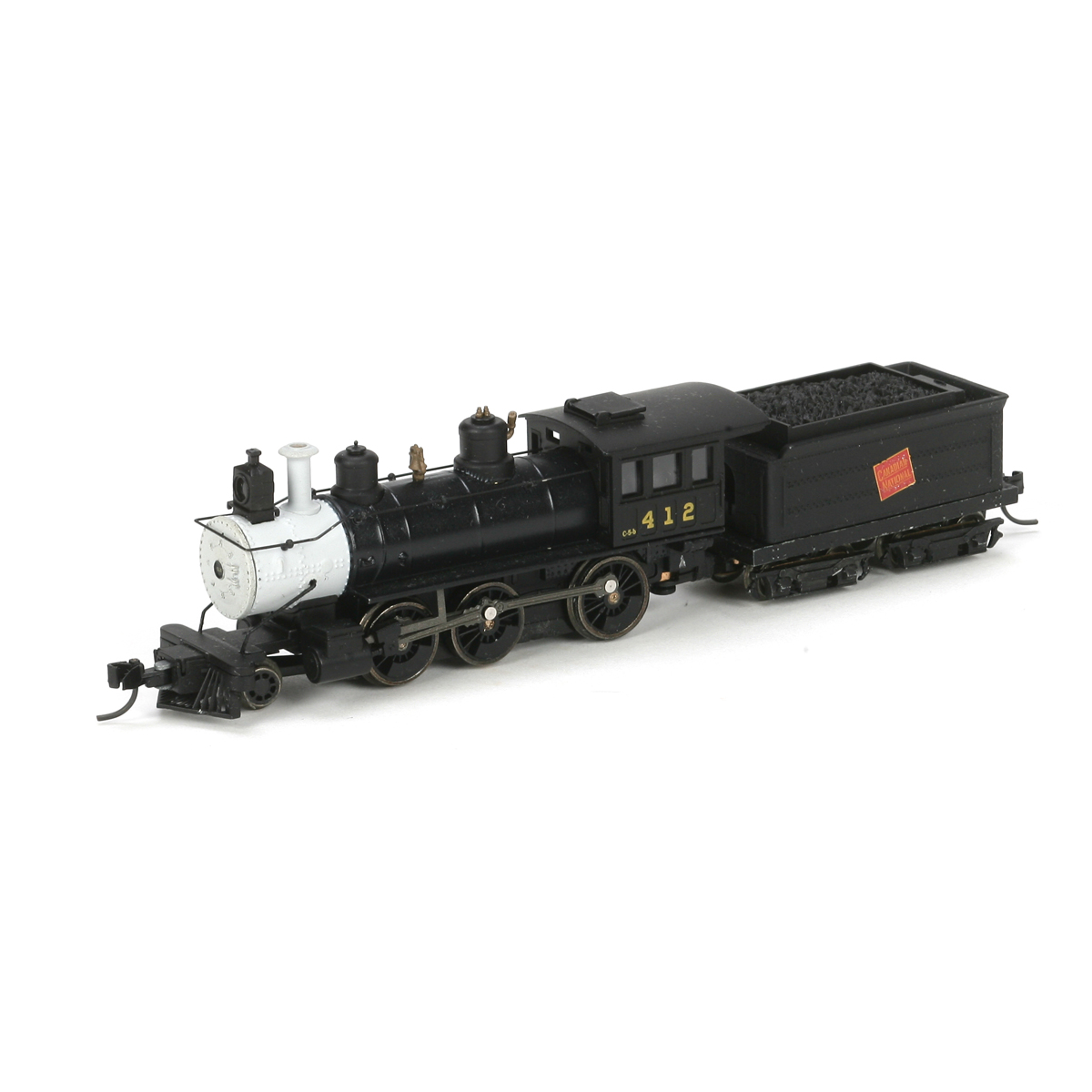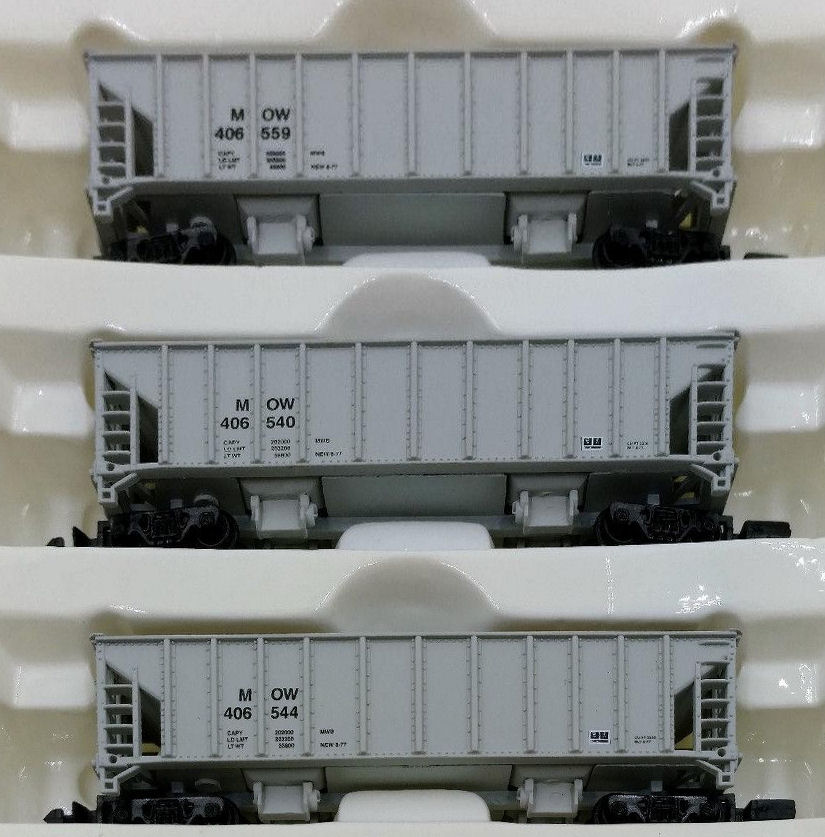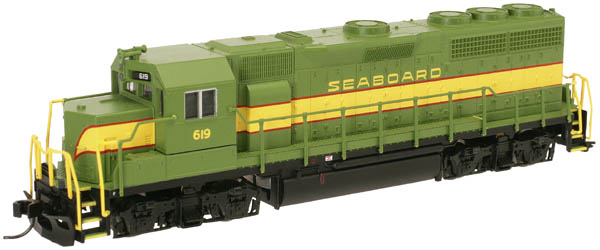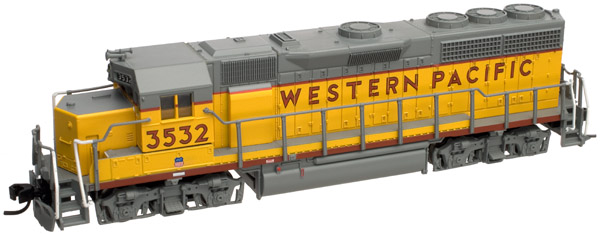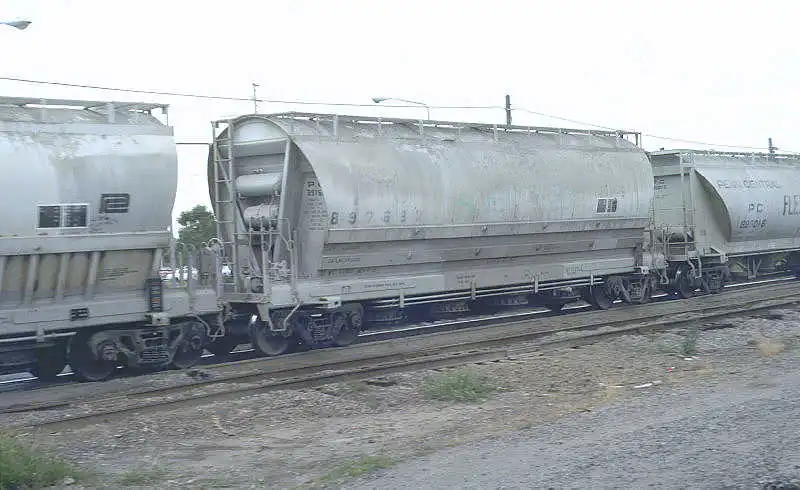Model Information: Built between August 1964 and June 1966 the American Car & Foundry (ACF) 3500 cu. ft. covered hopper was an early
innovator in pressure differential unloading and a marketing masterclass thanks to the “Flexi Flo” tag coined by the car’s
biggest customer, the New York Central railroad.
Prototype History: Built between August 1964 and June 1966 the American Car & Foundry (ACF) 3500 cu. ft. covered hopper was an early
innovator in pressure differential unloading and a marketing masterclass thanks to the “Flexi Flo” tag coined by the car’s
biggest customer, the New York Central railroad.
New York Central specified a car with a 315,000 pound gross weight (315K) to take full advantage of the heavy-duty capability of its core mainlines. The cars had a load limit of 245,200 lbs., allowing them to hold six truckloads of product each – a critical factor when trying to win business back from the highway. The specific gravity of powdered cement dictated a 3500 cubic foot capacity. To emphasize how far ahead of the times NYC was consider that the standard railcar gross weight was 220K, there still isn’t a national 315K network in 2020 and some short lines and regional railroads are still struggling to get their bridges upgraded to 286K.
The cars were delivered to NYC in four batches as outlined in the roster below. They each differed slightly from each other. The most obvious spotting characteristic were the vertical side ribs on the first batch of 25 cars. One has to look closely to spot the differences between the next two lots. The final NYC group was made up of five 3600 cubic foot tank type covered hoppers built for BF Goodrich. They are included for reference but are a totally different car design.
New York Central specified a car with a 315,000 pound gross weight (315K) to take full advantage of the heavy-duty capability of its core mainlines. The cars had a load limit of 245,200 lbs., allowing them to hold six truckloads of product each – a critical factor when trying to win business back from the highway. The specific gravity of powdered cement dictated a 3500 cubic foot capacity. To emphasize how far ahead of the times NYC was consider that the standard railcar gross weight was 220K, there still isn’t a national 315K network in 2020 and some short lines and regional railroads are still struggling to get their bridges upgraded to 286K.
The cars were delivered to NYC in four batches as outlined in the roster below. They each differed slightly from each other. The most obvious spotting characteristic were the vertical side ribs on the first batch of 25 cars. One has to look closely to spot the differences between the next two lots. The final NYC group was made up of five 3600 cubic foot tank type covered hoppers built for BF Goodrich. They are included for reference but are a totally different car design.
Road Name History: FMC Corporation is an American chemical manufacturing company headquartered in Philadelphia, Pennsylvania. The company was originally founded by chemist John Bean in 1883 as the Bean Spray Pump Company in Los Gatos, California, producing piston pumps for insecticides. In 1928, Bean Spray Pump purchased two companies: the Anderson-Barngrover Co. and Sprague-Sells Co. At this time the company changed its name to Food Machinery Corporation, and began using the initials FMC.
In 1941 the company FMC received a contract to design and build amphibious landing vehicles tracked vehicles for the United States War Department, and afterwards the company continued to diversify its products, including an extensive line of rail cars. The rail car production really kicked into high gear during the 1970s when FMC produced many models to take advantage of the Per Diem rules. Between 1965 and 1985 FMC was the owner of the Gunderson metal works in Springfield, Oregon, during that period it was known as the "Marine and Rail Equipment Division of FMC" (MRED), it was sold in 1985 to The Greenbrier Companies.
FMC employs 7,000 people worldwide, and had gross revenues of US$2.8 billion in 2017
From Wikipedia
In 1941 the company FMC received a contract to design and build amphibious landing vehicles tracked vehicles for the United States War Department, and afterwards the company continued to diversify its products, including an extensive line of rail cars. The rail car production really kicked into high gear during the 1970s when FMC produced many models to take advantage of the Per Diem rules. Between 1965 and 1985 FMC was the owner of the Gunderson metal works in Springfield, Oregon, during that period it was known as the "Marine and Rail Equipment Division of FMC" (MRED), it was sold in 1985 to The Greenbrier Companies.
FMC employs 7,000 people worldwide, and had gross revenues of US$2.8 billion in 2017
From Wikipedia
Brand/Importer Information: Rapido Trains Inc. is a high-end manufacturer of model trains and accessories in HO, OO and N (North American 1:160 and British 1:148) scales. The firm's mission is to recreate the entire rail travel experience, from fully-detailed interiors and under-frames on models to fully-wired telephone poles for model railroads.
The name RAPIDO was introduced by Canadian National in 1965 to headline the railway's high-speed intercity passenger services. Until the mid-1980s, RAPIDO stood for fast schedules, frequent trains, and superb service.
Today, Rapido Trains continues the RAPIDO concept with state-of-the-art models and attention to fine detail. This company is not related to the venerable (and now defunct) German manufacturer Arnold Rapido, nor the present-day Arnold (which is owned by the United Kingdom's Hornby), Canadian based Rapido Trains was founded in 2003.
The name RAPIDO was introduced by Canadian National in 1965 to headline the railway's high-speed intercity passenger services. Until the mid-1980s, RAPIDO stood for fast schedules, frequent trains, and superb service.
Today, Rapido Trains continues the RAPIDO concept with state-of-the-art models and attention to fine detail. This company is not related to the venerable (and now defunct) German manufacturer Arnold Rapido, nor the present-day Arnold (which is owned by the United Kingdom's Hornby), Canadian based Rapido Trains was founded in 2003.
Item created by: CNW400 on 2022-08-12 21:38:35. Last edited by George on 2025-03-24 07:23:10
If you see errors or missing data in this entry, please feel free to log in and edit it. Anyone with a Gmail account can log in instantly.
If you see errors or missing data in this entry, please feel free to log in and edit it. Anyone with a Gmail account can log in instantly.





